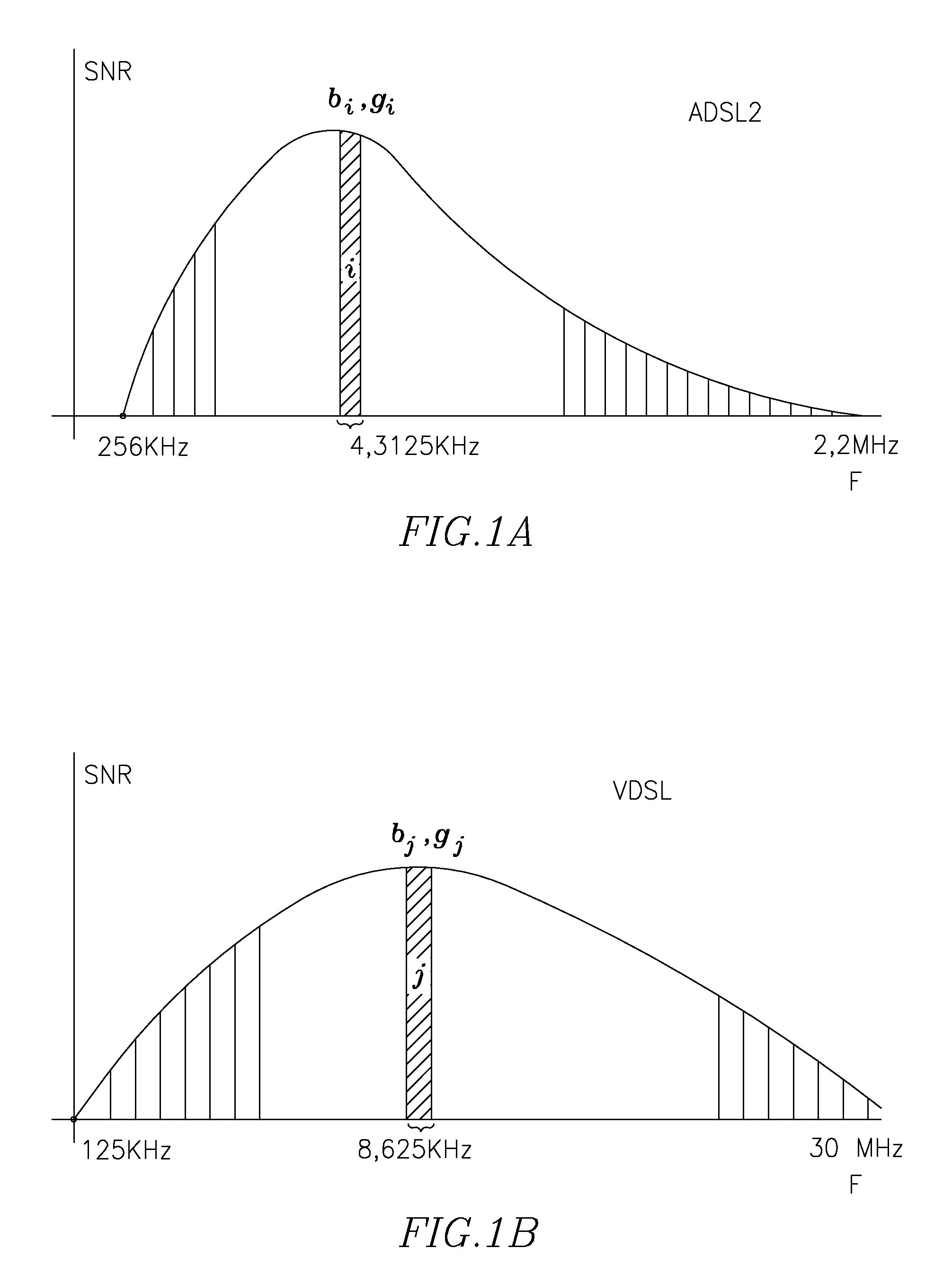Technology for rate adaptation in a multi-line data transmission system
a data transmission system and rate technology, applied in the field of technology of multiple data streams, can solve problems such as lack of adequate technology
- Summary
- Abstract
- Description
- Claims
- Application Information
AI Technical Summary
Benefits of technology
Problems solved by technology
Method used
Image
Examples
Embodiment Construction
[0087]FIG. 1a (prior art) shows how bandwidth of an DMT, for example ADSL (Asymmetric Digital Subscriber Loop) transmission line can be divided into narrow spectrum slices (bins). ADSL bandwidth comprises 256 downstream bins with spacing of 4.3125 kHz there-between. Each bin of the operating transmission line is characterized by its current Signal to Noise Ratio (SNR). The SNR value of a particular bin “i” is directly proportional to the number of information bits Bi which can be successfully transmitted in that particular bin. The number of bits Bi depends on some additional parameters, for example on a value of a specific fine gain gi which can be reached for this specific bin.
[0088]FIG. 1b (prior art) illustrates an exemplary graph of a VDSL (Very High frequency Digital Subscriber Loop) transmission line, where the total bandwidth spectrum is much broader and a specific bin can be also wider.
[0089]It is understood, that conditions in the line (of FIG. 1a, or of FIG. 1b) may chang...
PUM
 Login to View More
Login to View More Abstract
Description
Claims
Application Information
 Login to View More
Login to View More - R&D
- Intellectual Property
- Life Sciences
- Materials
- Tech Scout
- Unparalleled Data Quality
- Higher Quality Content
- 60% Fewer Hallucinations
Browse by: Latest US Patents, China's latest patents, Technical Efficacy Thesaurus, Application Domain, Technology Topic, Popular Technical Reports.
© 2025 PatSnap. All rights reserved.Legal|Privacy policy|Modern Slavery Act Transparency Statement|Sitemap|About US| Contact US: help@patsnap.com



